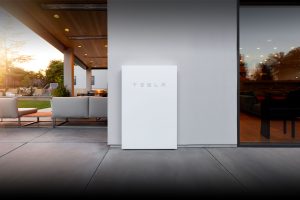- 🔧 Tesla will deploy an Over-the-Air software update to resolve a rear camera issue in 8,700 EVs in China.
- 🚗 The fix includes 1,071 Model S and Model X vehicles, along with 7,529 Model 3 vehicles, categorized as a “recall” by Chinese regulators.
- 📷 The rear camera issue stems from unstable integrated circuit communications, affecting the field of vision when the vehicle is in reverse.
- 🔄 Tesla’s ability to address issues via over-the-air updates has sparked discussions about the terminology of recalls.
- 📝 CEO Elon Musk suggests the need for updated recall terminology, as traditional definitions may not fully encompass issues resolved through software updates.
- 🛠️ Regulatory agencies maintain the term “recall” for issues that pose safety risks, regardless of whether they are fixed through software updates or dealership visits.
In the realm of automotive technology, advancements are constantly reshaping the landscape of vehicle maintenance and safety. Tesla, a pioneer in the electric vehicle (EV) industry, has been at the forefront of innovation not only in vehicle design but also in how issues are addressed post-purchase. A recent announcement from Tesla regarding an Over-the-Air software update to remedy a rear camera bug in thousands of vehicles in China has sparked discussions about the future of automotive recalls and the role of technology in resolving issues efficiently.
The Rear Camera Bug: A Closer Look
The issue at hand revolves around an instability in integrated circuit communications, leading to compromised functionality of the rear camera when the vehicle is in reverse. This problem, while seemingly minor, can significantly impact the driver’s ability to navigate safely, thereby warranting prompt attention and resolution.
Tesla’s Response: Over-the-Air Update
In a move that showcases Tesla’s commitment to customer satisfaction and safety, the company has opted to deploy an Over-the-Air software update to address the rear camera bug in approximately 8,700 EVs in China. This includes a mix of Model S, Model X, and Model 3 vehicles, totaling over 8,000 units. By leveraging Over-the-Air updates, Tesla can swiftly deliver fixes to its vehicles without requiring owners to visit service centers physically.
Rethinking Recall Terminology
Tesla’s approach to addressing vehicle issues through software updates has raised questions about the traditional terminology associated with recalls. While regulatory agencies categorize these updates as recalls due to their impact on safety, CEO Elon Musk has suggested the need for updated terminology to better reflect the nature of these fixes. As technology continues to play a more significant role in vehicle maintenance, it’s essential to adapt terminologies to accurately represent the evolving landscape of automotive engineering.
Embracing Technological Solutions
The utilization of Over-the-Air updates by Tesla underscores the transformative power of technology in the automotive industry. By harnessing the capabilities of software, manufacturers can swiftly address issues, enhance functionality, and improve overall user experience without the need for extensive manual interventions. This not only streamlines the process of resolving issues but also demonstrates a proactive approach to ensuring vehicle safety and performance.
Looking Towards the Future
As automotive technology continues to advance, we can expect to see an increased reliance on Over-the-Air updates and other technological solutions to address vehicle issues. Tesla’s proactive stance in deploying Over-the-Air updates for the rear camera bug serves as a testament to the potential of technology to revolutionize traditional approaches to vehicle maintenance. Moving forward, it’s crucial for manufacturers, regulatory bodies, and consumers alike to adapt to this shifting paradigm and embrace the opportunities it presents for enhancing vehicle safety and efficiency.





